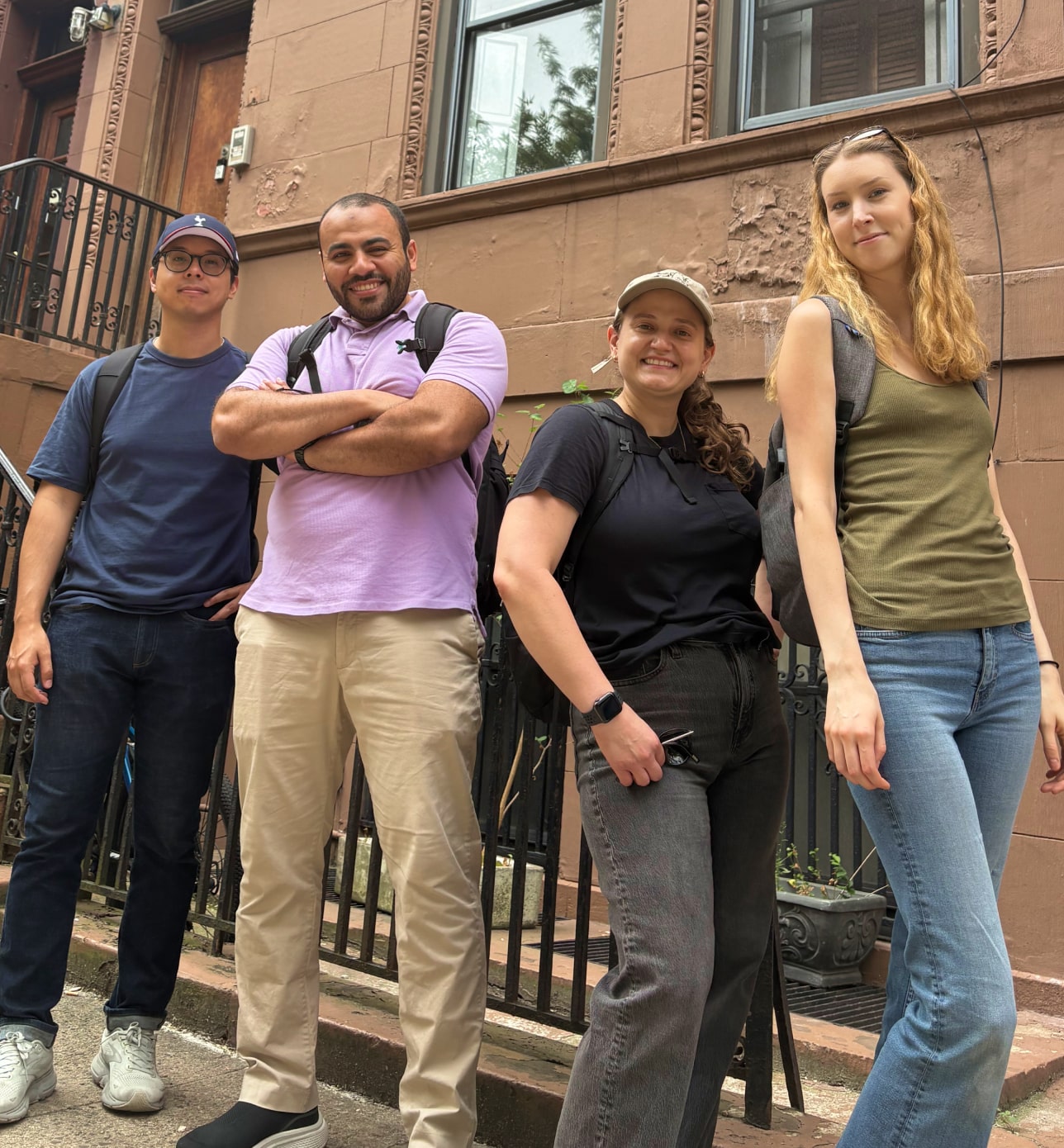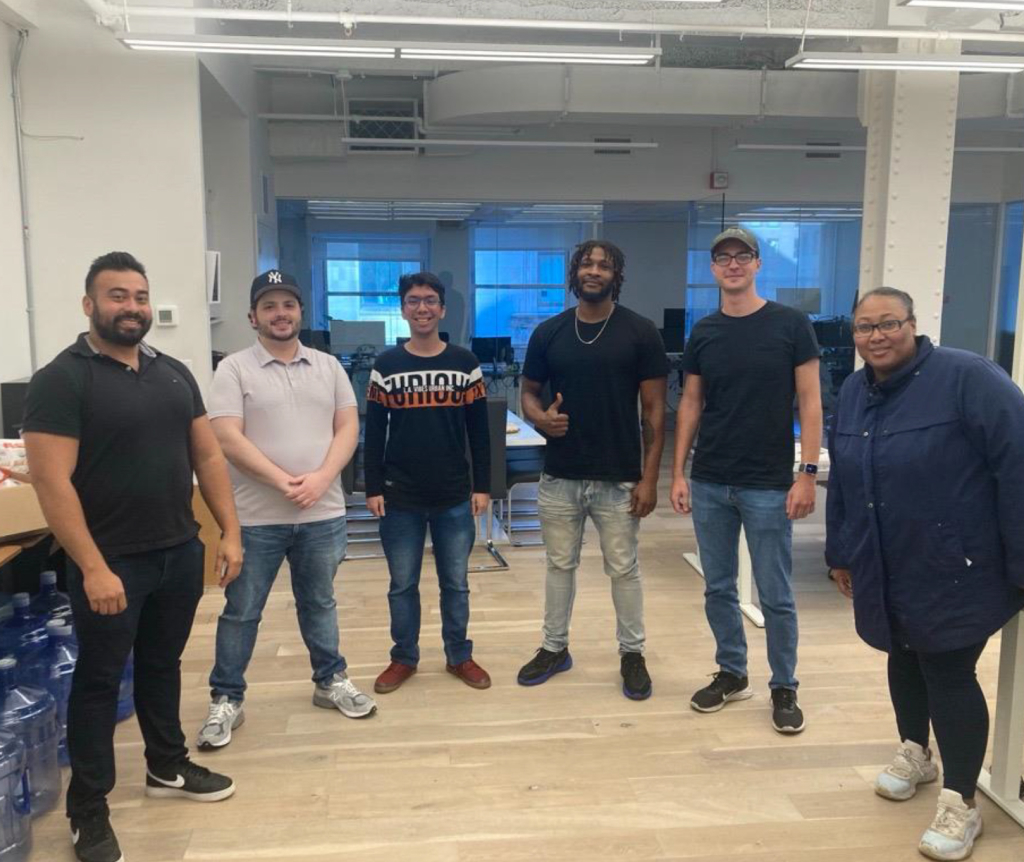Resources
Workforce Development & Training
Upskill your team for the clean energy transition.
- Training aligned with Clean Energy Program standards
- Flexible on-site or virtual sessions tailored to your needs
- ASHRAE-compliant survey training
- Perfect for field technicians, QA teams, and program partners
Advanced HVAC Load Calculations course
The Advanced HVAC Load Calculations course prepares participants for professionals in the clean energy sector, focusing on residential HVAC load calculations using Manual J and Wrightsoft software. Delivered through ten comprehensive modules, students gain hands-on experience and foundational knowledge in building science, energy efficiency, electrification, HVAC systems, heat pumps, and proper load calculations.
Students will familiarize themselves with the New York State Clean Heat Program, which offers rebates and financing to support the adoption of energy-efficient heat pump technologies across residential, commercial, and industrial sectors. They will also have the opportunity to participate in a capstone project where students will be able to produce a load calculation of an existing building.
The instructors are Jhonatan Alvizurez and Cristian Kim.
The initiative is a collaboration between Kawi Energy Group, Soulful Synergy, and Willdan Clean Energy Academy (WCEA).

Program Benefits & Career Incentives
Career Pathways:
Contractors, HVAC technician, solar installer, energy auditor, building performance specialist.
Hands-On Learning:
Real-world tools, Wrightsoft software, and field-based simulations.
Access to Incentives:
NYS Clean Heat Program rebates and regional energy-efficiency programs.
Sustainability Focus:
Contribute to decarbonization and energy-efficient building practices.
Student Testimonials

“During my studies in HVAC Load Calculations come, I acquired an understanding of the principles and methodologies to truly determine the heating and cooling requirements of any building, whether residential or commercial. I learned to calculate sensible and latent loads, examine building envelopes, ascertain internal heat gains, and consider weather data records.
As such, I am confident in the use of industry-standard software and manual methods to satisfactorily size HVAC systems using the best possible criteria for comfort, energy efficiency, and appropriate codes and standards. This training has enabled me to produce HVAC designs for buildings to meet their specific needs, thus rendering the equipment either oversize or undersized.”
Arsalan Umer
“I really enjoyed the Advanced HVAC Load Calculation course. I learned a lot of useful information, and the instructors made the class both dynamic and engaging. They were very knowledgeable and always patient, taking the time to answer every question and making sure we understood the concepts. I truly appreciate the effort and dedication the instructors put into the class—it made the whole learning experience even more valuable. I left the course feeling more confident and better prepared for real-world applications.”
Victor Pena Gomez

Hands-on instruction during the “Capstone Lab – Auditing Instrument Techniques,” where Kawi engineers trained participants on key energy auditing tools and calculations.
Fall 2024
Case Studies
Impact in Action
Demonstrated results across sectors and building types
Case 1: Healthcare & Administrative Facilities
Size: Multiple sites
Audit Type: ASHRAE Level 2 Energy Audits
Annual Savings: Over 200 metric tons CO₂e reduced annually
Cost After Incentives: $150,000 in utility and state incentives were secured
Measures: LED lighting upgrades, Boiler tuning, Low-flow fixtures, Demand Control Ventilation (DCV), Weatherstripping, Electrification readiness assessments (e.g., heat pump feasibility, panel capacity evaluation), Envelope improvements (e.g., insulation, window performance), Passive ventilation strategies, Rooftop Unit (RTU) replacement with heat pump systems
Case 2: Commercial & Institutional (Multifamily & Mixed-Use Properties)
Size: Three pilot buildings across Manhattan and Brooklyn (representative of a 100+ building portfolio)
Audit Type: ASHRAE Level 2 Energy Audits under the NYSERDA Onsite Energy Manager Program
Annual Savings: Over 300 metric tons CO₂e reduced annually; estimated energy savings of over 25%
Measures: LED lighting upgrades, HVAC right-sizing and retro-commissioning, Envelope upgrades (insulation, glazing, infiltration control), Electric panel and transformer capacity evaluations, Heat pump transition planning, Domestic Hot Water (DHW) system upgrades, Demand-controlled ventilation (DCV), Load modeling for retrofit phasing, Energy Management Plan (EMP) development, Incentive eligibility mapping (NYSERDA, utility programs)
Case 3: Commercial Office and Retail (Historic 21-story building)
Size: 21-story mixed-use building
Audit Type: ASHRAE Level II Energy Audit and Full Retro-Commissioning (RCx)
Annual Savings:
- $348,512 in annual energy cost savings
- Over 1,000,000 kWh electricity saved
- 1,571 Mlbs of steam saved
Payback Period: 3.4 years (simple payback)
NPV (10%): Over $2.6 million
Measures: Lighting control upgrades (occupancy sensors in stairwells, basements, egress areas), VFD (Variable Frequency Drive) opportunities, Sensor recalibrations, Steam trap replacements, Pipe insulation, HVAC sequencing and schedule optimization, Economizer logic tuning, Functional performance testing for AHUs and DHW systems, Envelope assessments (infiltration control, glazing review), Current Facility Requirements (CFR) development, Siemens BMS optimization
Case 4: Commercial Warehousing & Logistics
Size: 92,500 ft² pilot facility (total portfolio: 800,000+ ft² across six buildings)
Audit Type: ASHRAE Level II Energy Audit and Retro-Commissioning (RCx) under Local Law 87, Preliminary Decarbonization Planning aligned with Local Law 97
Annual Savings: Over 103,000 kWh of electricity
10,000 therms of natural gas $24,000 in annual utility cost savings
Payback Period: Under 3 years (simple payback)
Measures: HVAC and DHW schedule resets, Insulation repairs (e.g., uninsulated piping), DHW system optimization, Rooftop unit (RTU) control logic corrections, Control system reprogramming, GHG benchmarking for LL97, Electrical capacity and panel readiness review, Heat pump adoption feasibility, Portfolio-wide compliance matrix and capital planning strategy
Case 5: Commercial & Multifamily
Size: Varied (program-wide QA/QC across hundreds of buildings)
Audit Type: QA/QC Field Verification and Inspection Services for Utility Incentive Programs
Cost After Incentives: Kawi verified over $3M in eligible incentives, providing valuable insights and support
Measures: Air-source heat pumps (ASHPs), Variable Refrigerant Flow (VRF) systems, Control sequence validation, HVAC system installation quality (weatherproofing, condensate management, sensor placement), Issue resolution (e.g., misconfigured controls, defrost logic errors), Documentation compliance (model verification, commissioning records), Programmatic feedback to improve installer training and incentive eligibility
Case 6: Commercial / Industrial (Light Manufacturing)
Size: 49,000 square feet
Audit Type: ASHRAE Level II Energy Audit with Decarbonization and Electrification Readiness
Assessment
Annual Savings:
- 198,074 kWh electricity
- 11,148 therms natural gas
- $61,413 annual utility cost savings
- 116.4 MTCO₂e projected annual emissions reduction
Payback Period: 6.55 years (simple payback)
NPV (10%): $270,760
Measures: LED lighting retrofits (production and office zones), Electronically commutated (EC) motor upgrades, Variable Frequency Drives (VFDs) on dust collectors and HVAC fans, Pipe insulation (DHW and heating loops), Demand-Controlled Ventilation (DCV), Heat pump retrofit plan for office HVAC, HVAC schedule resets and override elimination, Panel capacity evaluation for phased electrification, eQUEST modeling and process load simulations, LL97 compliance benchmarking and emissions forecasting, Development of Current Facility Requirements (CFR)